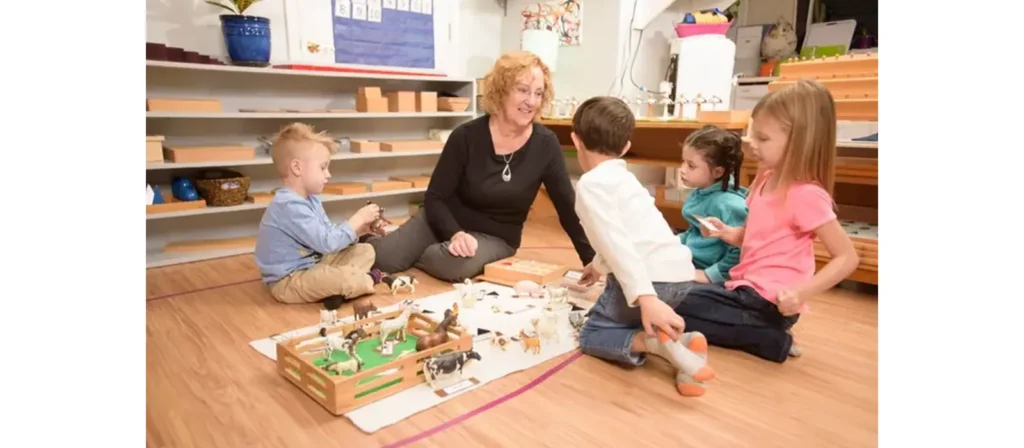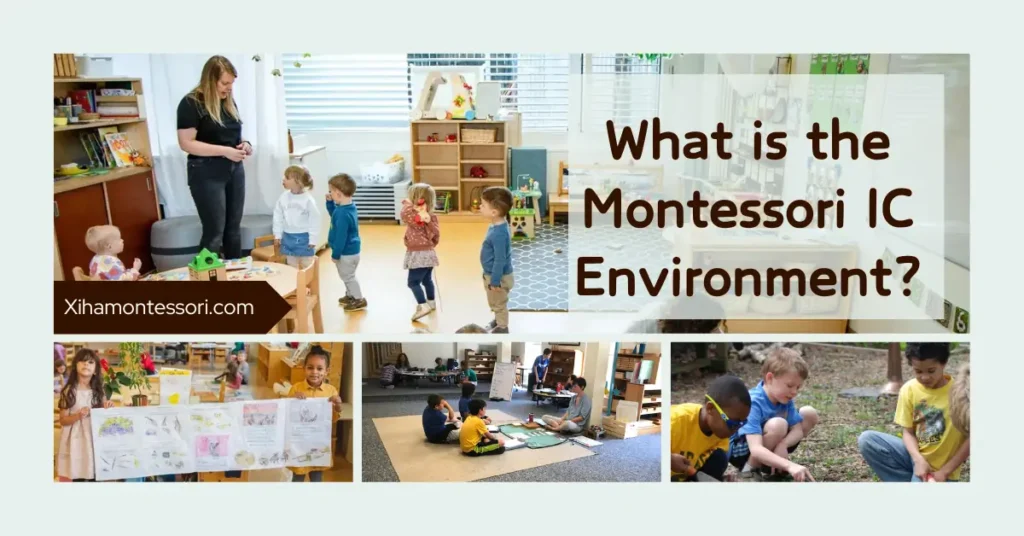Parents and educators often feel overwhelmed when choosing their children’s proper early education environment. The Montessori IC Environment is an intriguing option, but what does it entail?
IC is the abbreviation of Infant Community in English, which means infant community.
Montessori IC Environments support the developmental needs of infants and toddlers, and they focus on fostering independence, sensory exploration, and social interaction through age-appropriate materials and activities. Children are allowed to explore and discover at their own pace.
The Montessori IC environment caters to the unique needs of each child, allowing them to develop their interests and talents. By learning about the Montessori IC environment, you will gain valuable insight into an innovative approach to education that has been changing the lives of children worldwide.
What is the Ideal Age Range for the Montessori IC Environment?
The IC environment is suitable for 12-14 months to 2 and a half to 3 years old. Unlike Nido, The Montessori IC environment was established to meet the specific needs of infants and toddlers in these early years because children at this age need an environment outside the family to obtain various information. In IC, children’s studies and lives are here.

How Do Caregivers Support the Montessori IC Environment?
Montessori caregivers typically require specialized training from accredited Montessori programs. This training covers child development, Montessori philosophy, and using Montessori materials.
Caregivers in the Montessori IC Environment act as guides rather than traditional teachers, observing each child’s interests and developmental stages and providing appropriate materials and activities to support individual growth, an individualized approach that ensures each child’s unique needs are met.
Teacher-to-child ratio: For new teachers, one trained teacher and one assistant can care for 12 children. If there is enough space for experienced teachers and assistants, one teacher and one assistant can care for 18 children.

How Does the Montessori IC Environment Support Independence?
The preparation of the Montessori IC environment must be suitable for children to develop independence and order and allow them to obtain a lot of sensorial information. The classroom furniture in the environment must be proportional to the child’s body, with readily available materials, allowing infants to move freely and choose their activities. This permits the development of children’s self-esteem, self-confidence, and self-reliance.
The main teaching aids include developing eye-hand coordination, language, movement, and daily tasks.
Montessori IC Classroom Primary Tasks
The IC classroom has two main tasks: one is daily life, and the other is language development.
Daily Life
Daily life tasks in the Montessori IC Classroom are essential for fostering independence and practical skills. These activities include self-care routines, such as dressing and washing hands, and participating in the environment’s care, like cleaning up and organizing materials. These tasks help children develop a sense of responsibility and self-sufficiency.
Language Development
Language development is a critical focus in the Montessori IC Classroom. Activities are designed to enhance vocabulary, comprehension, and communication skills through storytelling, songs, and conversations. The environment is rich with language materials, such as picture cards and books, to support the natural acquisition of language in a meaningful context.
How Do You Promote Social Interaction?

The Montessori IC environment encourages social interaction through mixed-age groupings and collaborative activities. Children learn to communicate, share and develop empathy as they interact with their peers and caregivers. This social aspect is essential to creating healthy emotional and social skills. Discover more about the benefits of social interaction here.
What Materials and Activities Are Included in the Montessori Ic Environment?
Materials and activities in the Montessori IC environment are designed to be developmentally appropriate and engaging. They include real-life activities, sensory materials, and simple puzzles that promote fine motor skills, attention, and problem-solving. For a detailed list of Montessori materials, check out this resource.
Conclusion
The Montessori IC environment offers a practical early childhood education approach emphasizing independence, sensory exploration, and social interaction. By understanding its core principles and benefits, parents and educators can make informed decisions about the best educational path for their young children.
In these work settings, children are active participants, while the role of adults is to prepare a complete environment, guide them and help them connect with the environment. Children will learn to choose in these jobs and bear the results of the choices. In the classroom, children will have at least 2 hours of independent work daily, plus 1 or 1.5 hours to play outside.
If you want to learn more about Montessori Education or Classroom Design, please contact us at Xiha Montessori.













